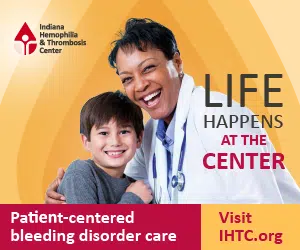Public schools are an integral part of our society and have been educating our children for centuries. In fact, the first public school in the United States was founded in Boston in 1635, 181 years before Indiana even became a state. You may think you know all there is to know about public schools, but our local districts continue to adopt new programs that benefit our students. Read on to learn what a few of these schools are up to. (You might just wish you could go back as a student and do it all over again!)
1.Our public schools offer a wide breadth of programming.
Times have changed, and gone are the days of a one-size-fits-all classroom. In Wayne Township, the district offers over forty-one programs that prepare students for the workforce. “We have a cooperative career and technical center, an early college high school, virtual online learning opportunities and options to earn associates degrees while at the same time earning a high school diploma,” says Dr. Jeff Butts, Superintendent of the Metropolitan School District of Wayne Township and the President of the Indiana Association of Public School Superintendents. “And that’s at no cost to our students.”
Dnaa Altemeyer, Coordinator of Communications, Public Relations and Marketing at Metropolitan School District, Lawrence Township, says, “We offer everything from STEM education to bilingual education. In fact, Lawrence Township has the number one Spanish Immersion program nationally. The breadth of offerings is a big deal in our district. And that’s preschool through grade twelve.” Altemeyer also notes the wide range of advanced placement classes that they are able to offer their students.
Carrie Cline Black, District Spokesperson for Indianapolis Public Schools, shares an interesting new program they have implemented. “We are the only school in the state of Indiana and one of the only high schools in the nation to offer health informatics classes at the high school,” she says. “It’s a relatively new career choice but quickly growing. Students look at problems in the healthcare industry and then develop and design solutions that improve the process.”
2. Special education services are available to all students.
“We have special education pre-K through high school,” says Cline Black “Including a collaborative kindergarten program where we integrate students with special needs or unique challenges into a classroom with other students.” In these classrooms there are two teachers, the lead teacher and then a secondary teacher that provides kids with special needs one-on-one attention. And, unlike other schools that have entrance exams, public schools accept everyone. “We don’t pick our students,” says Altemeyer. “We don’t give them an entrance exam. We take them where they are and we educate them to the best of their ability.”
3. The competition level is very high.
Many public schools have the advantage of larger populations, which can allow for competition on a larger level. “We have intermural programs, B teams and JV, so everyone has an opportunity to participate. But the top performers, whether athletics, performing arts or speech and debate, they compete at a higher level,” points out Altemeyer.
4. There’s a lot of choice in public schools.
“I think one of the misperceptions of public schools is that people go to public schools when they can’t go other places,” says Dr. Butts. “But Indiana makes sure that isn’t the case with things like vouchers and opportunities for students to go to different schools. We have 16,300 children whose parents chose to send them to our school today.
The choice offered at Indiana public schools is not just in the classes they elect to take, but also in the location and specific focus of the school. “Not every child goes to the school that is in their neighborhood,” says Cline Black. “Families can choose throughout the district based on each school’s specific programming.” From Spanish immersion programs to action-based kinesthetic schools, where students walk on treadmills, ride stationary bikes or jump on mini trampolines while doing their times tables or memorizing their vocabulary words, there’s a school to fit almost every interest or need.
In fact, in the future, high schools in the Indiana Public School District will be transitioning to 100% choice. Cline Black says students will “now choose their high school programming and Indiana Public Schools will provide transportation to that high school.” The purpose is to ensure that students are learning the subjects they’re most passionate about and in the way that best works for them. “When students are engaged in something that interests them they are more successful,” she says.
5. Public schools are a microcosm of the real world.
A diverse student population is another asset to attending public school that Altemeyer sees. “We serve extremely poor students and extremely wealthy students. We also have a lot of diversity as far as race and ethnicity.” Because of that diversity, she says “students experience an environment that is much more comparable to the world we live in.” That sort of diversity is a benefit to students, says Dr. Butts. “You may be learning around children that are just like you or you may be learning with children that are growing up with a different background, different cultures and customs and religions than you. You become a more well-rounded, diverse person yourself as you learn in that environment.”
Do you know other things about our public schools that you’d like to share? Send your comments to [email protected] and let us know!







